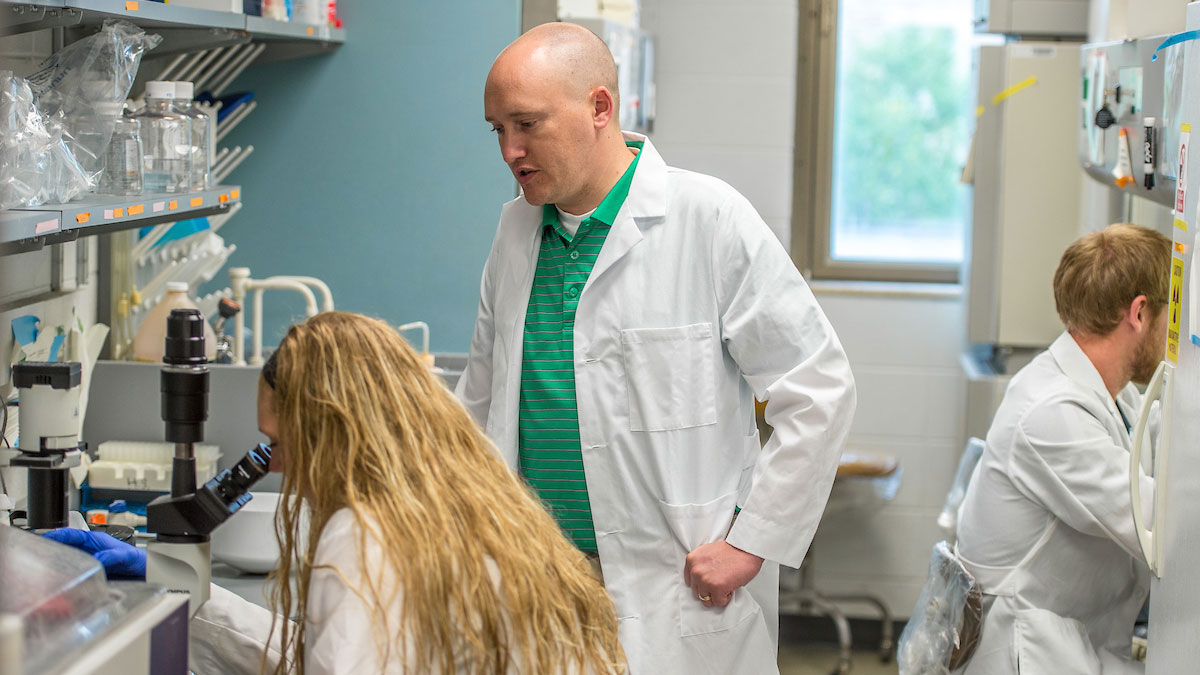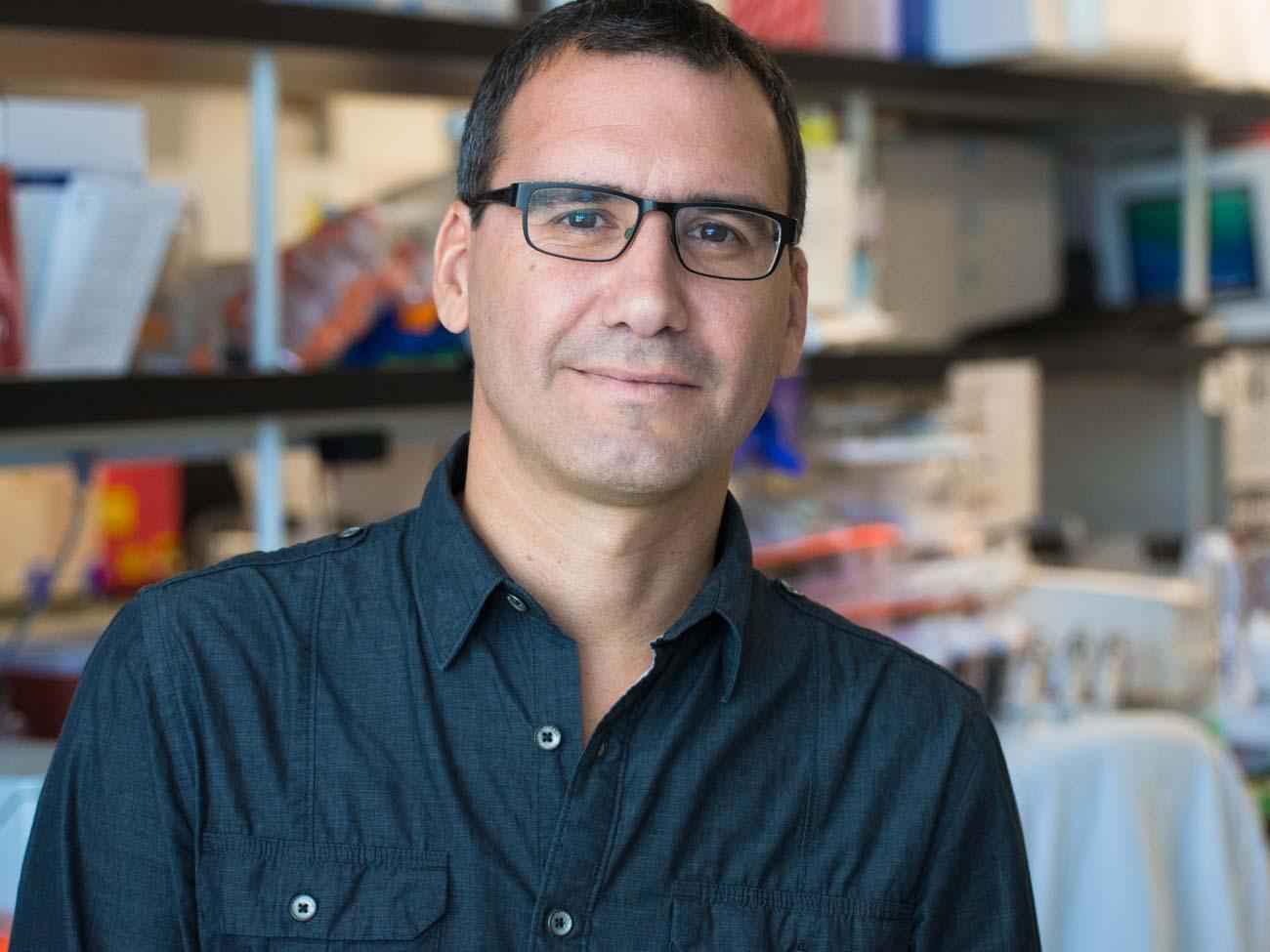Mucus is critical to human health. To explore how, researchers synthesized its major component, sugar-coated proteins called mucins, and discovered that changing the mucins of healthy cells to be more cancer-like made cells act more cancer-like. They will present their results at ACS Spring 2024.
Tag: Cancer Cells
Data-processing tool could enable better early stage cancer detection
Cancers begin with abnormal changes in individual cells, and the ability to track the accumulation of mutations at the single-cell level can shed new light on the early stages of the disease
Researchers makes promising discoveries on role of vitamin B6 in pancreatic cancer
Vitamin B6 is beneficial in many ways, notably for its role in maintaining a strong immune system.
Novel bispecific design improves CAR T–cell immunotherapy for childhood leukemia
Findings from St. Jude Children’s Research Hospital showed a novel dual targeting approach, where a single molecule can recognize two potential cancer-related proteins, is more effective than the single targeting approach, preventing immune escape.
Neuroendocrine prostate cancer could be restored to a state that responds to treatment
It may be possible to restore drug-resistant neuroendocrine prostate cancer to a state that responds to treatment by depletion of a certain protein in cancer cells.
Brain tumor treatment by targeting TUG1, a gene that controls replication stress
A new study has unravelled a crucial link between how cancer cells cope with replication stress and the role of Taurine Upregulated Gene 1 (TUG1). By targeting TUG1 with a drug, the researchers were able to control brain tumor growth in mice, suggesting a potential strategy to combat aggressive brain tumors such as glioblastomas.
Newfound mechanism suggests drug combination could starve pancreatic cancer
A new combination of treatments safely decreased growth of pancreatic cancer in mice by preventing cancer cells from scavenging for fuel, a new study finds.
The Tiny Fish With Big Impact
The zebrafish is one of the most powerful biomedical research tools in use today. Children’s Hospital Los Angeles is using them to better understand what causes pediatric cancer.
Genetically engineered vesicles target cancer cells more effectively
Nanovesicles can be bioengineered to target cancer cells and deliver treatments directly, according to research at Binghamton University, State University of New York.
Cancerous brain tumor cells may be at ‘critical point’ between order and disorder, study suggests
Glioblastoma cells are poised near a “critical point” of order and disorder — meaning, the cells possess some form of large-scale coordination throughout the whole tumor that allows them to respond in practical unison to attempts to kill tumor cells, such as chemotherapy or radiation, a study suggests. Researchers say disrupting the large-scale organization of brain tumors may result in more powerful ways to treat and one day eliminate brain tumors.
Exercise increases the number of cancer-destroying immune cells in cancer patients
Two new Finnish studies show that short bouts of light or moderate exercise can increase the number of immune cells in the bloodstream of cancer patients.
Stopping a rare childhood cancer in its tracks
Scientists at Cold Spring Harbor Laboratory (CSHL) have discovered a new drug target for Ewing sarcoma, a rare kind of cancer usually diagnosed in children and young adults. Their experiments show that the cells causing this cancer can essentially be reprogrammed with the flick of a genetic switch.
Surprisingly, these microRNAs boost — rather than dampen — protein expression
microRNAs are thought to suppress protein expression in dividing cells, such as tumor cells. But new research in ACS Central Science shows that some of these molecules can elevate the expression of a particular gene in dividing human cells and in cancer cells, challenging conventional wisdom.
What the mechanical forces behind protein folding can tell us about metastatic cancer
Cells communicate with themselves and their cellular environment through mechanical bonds. This work advances understanding of the role of these forces on proteins as they interact to accomplish their biological functions, including the control of cancer.
Getting Tough on Tuft Cell Lung Cancer
Cold Spring Harbor Laboratory (CSHL) Professor Christopher Vakoc’s team discovered in 2018 a new type of small-cell lung cancer. The cancer originates from cells known as tuft cells.
A Mechanism Is Found Explaining How Cancer Cells Turn Into Normal Harmless Ones
A new research describes how highly proliferative leukemia cells end up becoming normal cells that no longer multiply, by changing the chemical modifications -the so-called epigenetics- of a type of its genetic material: the messenger RNA.
Marine sponge chemical and synthetic derivatives hijack human enzyme to kill cells
A human enzyme converts chemicals produced by marine sponges and related synthetic derivatives into cell-killing compounds, shows a study published today in eLife.
How high-fat diets allow cancer cells to go unnoticed
A high-fat diet increases the incidence of colorectal cancer. Cold Spring Harbor Laboratory Fellow Semir Beyaz and collaborators from Harvard Medical School and Massachusetts Institute of Technology have discovered that in mice, fat disrupts the relationship between intestinal cells and the immune cells that patrol them looking for emerging tumors.
New study shows that different types of cancers are likely to spread to specific areas of the brain
Brain metastasis occurs when cancer in one part of the body spreads to the brain. The lifetime incidence of such metastatic brain tumors in cancer patients is between 20%-45%, research shows.
Novel Assay Finds New Mechanism Underlying Red Blood Cell Aging
A multifaceted microfluidic in vitro assay is helping to identify the role of hypoxia on red blood cell aging via the biomechanical pathways. It holds promise for investigating hypoxic effects on the metastatic potential and relevant drug resistance of cancer cells.
Scientists Find a Pair of Proteins Control Supply Lines That Feed Cancer Cells
In human cancer cell and mouse studies, researchers from Johns Hopkins Medicine have found that a set of proteins work in tandem to build supply lines that deliver oxygen and nutrients to tumors, enabling them to survive and grow. The protein twosome, PADI4 and HIF-1, ramp up their activity under low-oxygen conditions that are typically found in a fast-growing tumor, allowing it to build new blood vessels that feed the cancer’s growth.
Engineers grow pancreatic “organoids” that mimic the real thing
MIT engineers, in collaboration with scientists at Cancer Research UK Manchester Institute, have developed a new way to grow tiny replicas of the pancreas, using either healthy or cancerous pancreatic cells.
Intracellular pH, Oxygen Consumption Rate Study Raises Questions about Limiting Metabolic Programming in Cancer Cells
Article title: Ethyl isopropyl amiloride decreases oxidative phosphorylation and increases mitochondrial fusion in clonal untransformed and cancer cells Authors: Sagar S. Manoli, Kyle Kisor, Bradley A. Webb, Diane L. Barber From the authors: “Our findings that a lower [intracellular pH (pHi)]…
Study Adds to Evidence that Most Cancer Cells Grown in a Dish have Little in Common Genetically with Cancer Cells in People
In a bid to find or refine laboratory research models for cancer that better compare with what happens in living people, Johns Hopkins Medicine scientists report they have developed a new computer-based technique showing that human cancer cells grown in culture dishes are the least genetically similar to their human sources.
Capturing the Chemistry of Light-Activated Cancer Drugs with Ruomei Gao
Ruomei Gao—an associate professor at SUNY College at Old Westbury—has been using facilities at the Center for Functional Nanomaterials at Brookhaven Lab to investigate two primary processes of photosensitization for cancer therapy and prevention.
moffitt investigators identify sting gene methylation that allows melanoma to evade the immune system
A dysfunctional immune system significantly contributes to the development of cancer. Several therapeutic strategies to activate the immune system to target cancer cells have been approved to treat different types of cancer, including melanoma.

Protein rewires metabolism to block cancer cell death, may allow cancer spread
One specific protein may be a master regulator for changing how cancer cells consume nutrients from their environments, preventing cell death and increasing the likelihood the cancer could spread, a study from the University of Notre Dame has shown.
Ionic liquid formulation uniformly delivers chemotherapy to tumors while destroying cancerous tissue
A Mayo Clinic team, led by Rahmi Oklu, M.D., Ph.D., a vascular and interventional radiologist at Mayo Clinic, in collaboration with Samir Mitragotri, Ph.D., of Harvard University, report the development of a new ionic liquid formulation that killed cancer cells and allowed uniform distribution of a chemotherapy drug into liver tumors and other solid tumors in the lab.

Scientists kill cancer cells by “shutting the door” to the nucleus
Scientists at Sanford Burnham Prebys Medical Discovery Institute have shown that blocking the construction of nuclear pores complexes—large channels that control the flow of materials in and out of the cell nucleus—shrank aggressive tumors in mice while leaving healthy cells unharmed. The study, published in Cancer Discovery, a journal of the American Association for Cancer Research, reveals a new Achilles heel for cancer that may lead to better treatments for deadly tumors such as melanoma, leukemia and colorectal cancer.